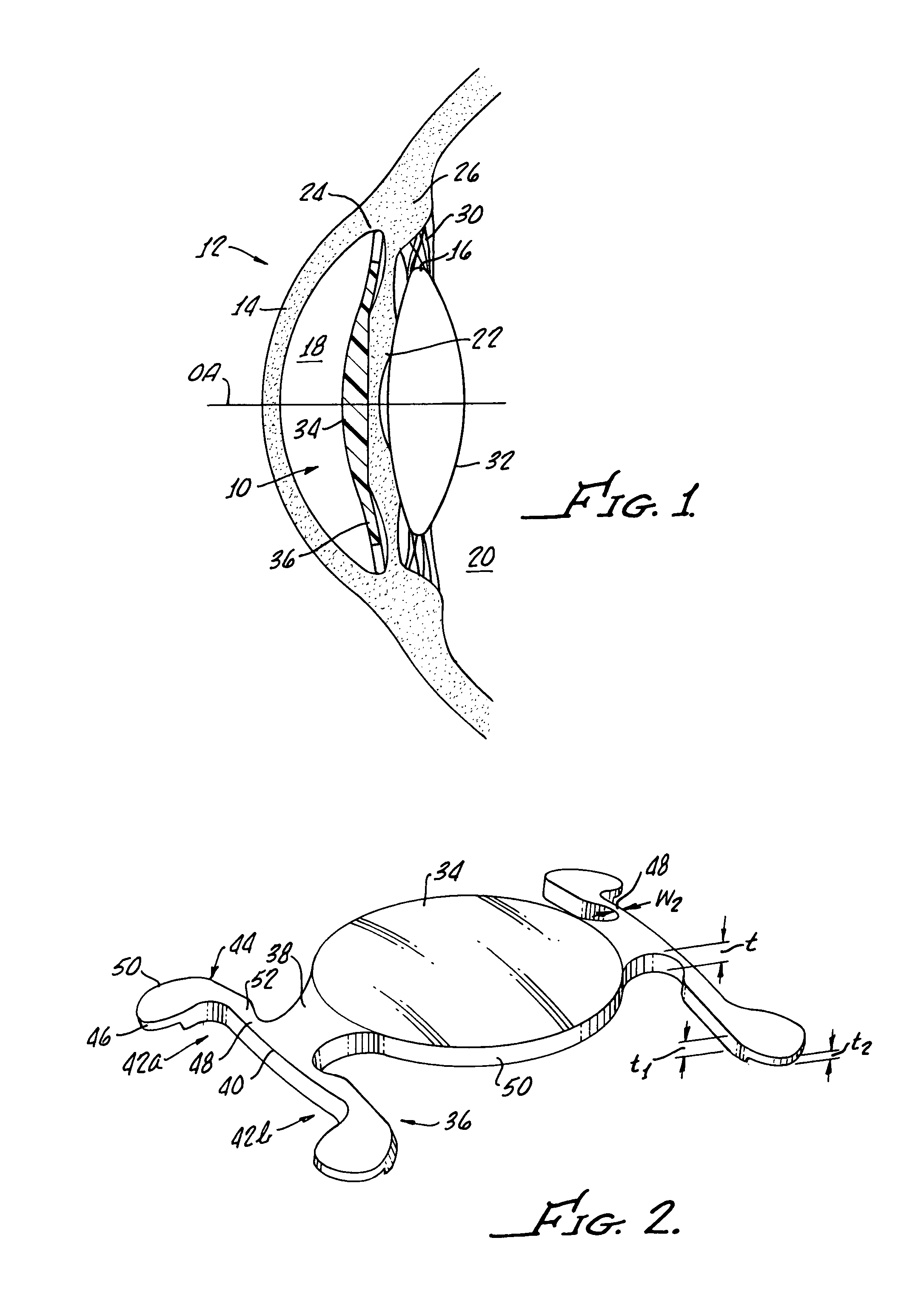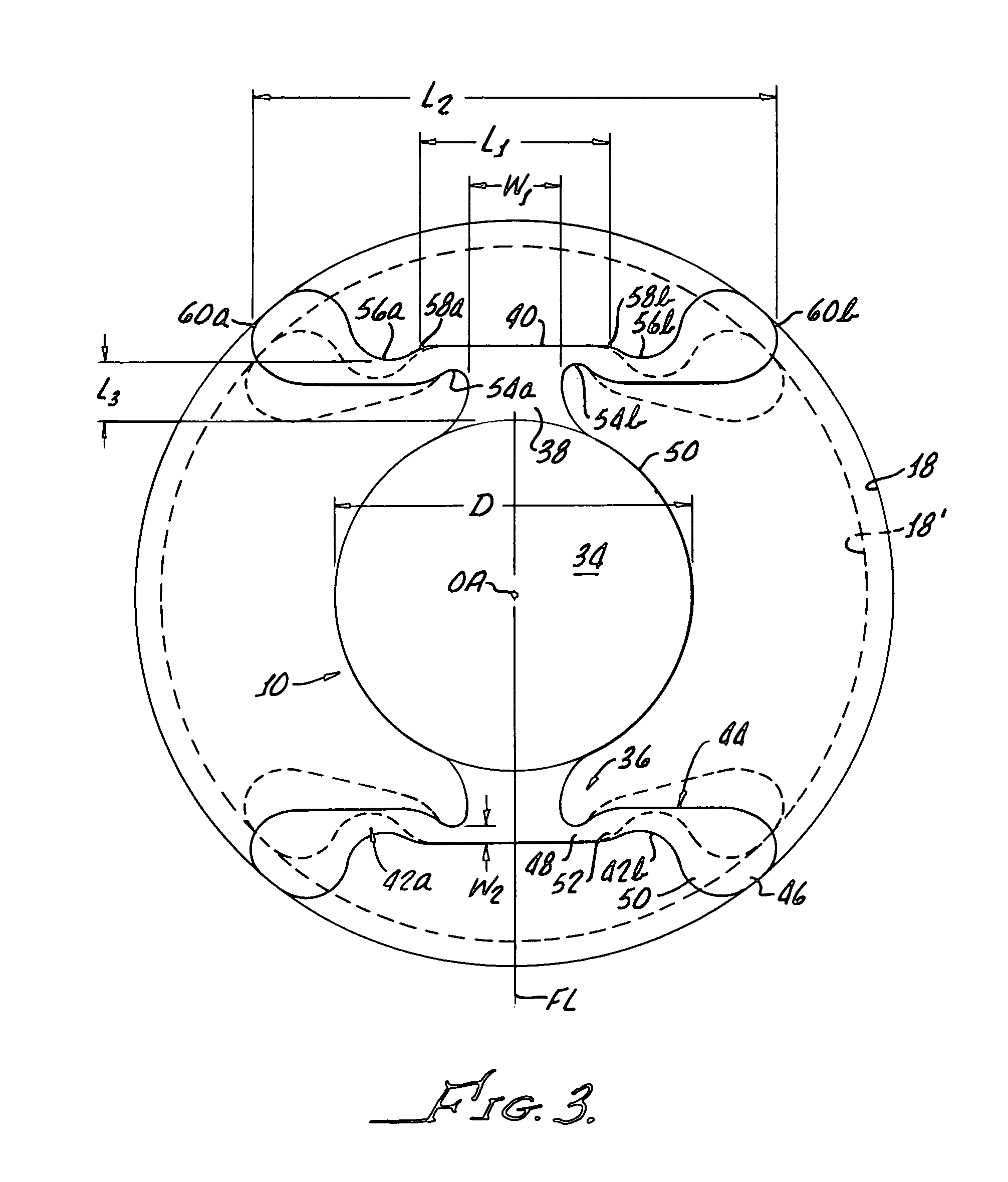Foldable angle-fixated intraocular lens
a fixed lens and foldable technology, applied in the field of intraocular lenses, can solve the problems of partial or complete blindness, distortion of the anterior chamber structure, and inability to fully or partially blind people, and achieve the effect of effective and safe insertion
- Summary
- Abstract
- Description
- Claims
- Application Information
AI Technical Summary
Benefits of technology
Problems solved by technology
Method used
Image
Examples
Embodiment Construction
[0032]Referring now to FIG. 1, an anterior chamber IOL (IOL) 10 of the present invention is shown implanted in an eye 12. The eye 12 comprises a cornea 14 shown to the left or front of the eye and an annular iris 16 shown in the middle of the eye. The iris 16 divides the eye 12 into an anterior chamber 18 at the front of the eye and a posterior chamber 20 in back of the iris. The iris 16 also defines the aperture or pupil 22, which is a variable opening in the middle of the iris. The posterior face of the cornea 14 and the anterior face of the iris 16 meet at the scleral spur defining an iridiocorneal angle 24. Behind the iris 16 is the ciliary process 26, which controls the movements of the natural crystalline lens 32 of the eye 12 via a plurality of fibrous zonules 30.
[0033]Still referring to FIG. 1, with additional reference to FIGS. 2 and 3, the anterior chamber IOL 10 of the present invention comprises an optic 34 that is supported in front of the pupil 22 by fixation members 3...
PUM
 Login to View More
Login to View More Abstract
Description
Claims
Application Information
 Login to View More
Login to View More - R&D
- Intellectual Property
- Life Sciences
- Materials
- Tech Scout
- Unparalleled Data Quality
- Higher Quality Content
- 60% Fewer Hallucinations
Browse by: Latest US Patents, China's latest patents, Technical Efficacy Thesaurus, Application Domain, Technology Topic, Popular Technical Reports.
© 2025 PatSnap. All rights reserved.Legal|Privacy policy|Modern Slavery Act Transparency Statement|Sitemap|About US| Contact US: help@patsnap.com



